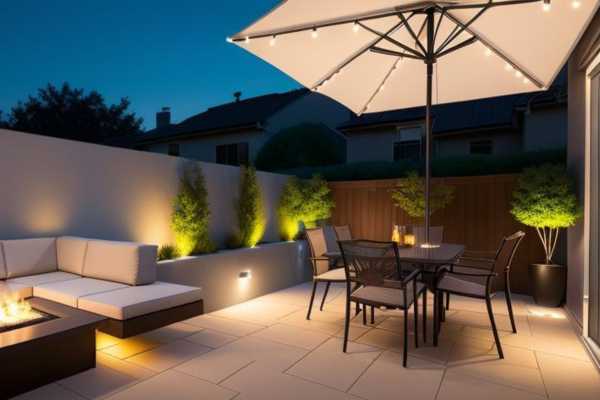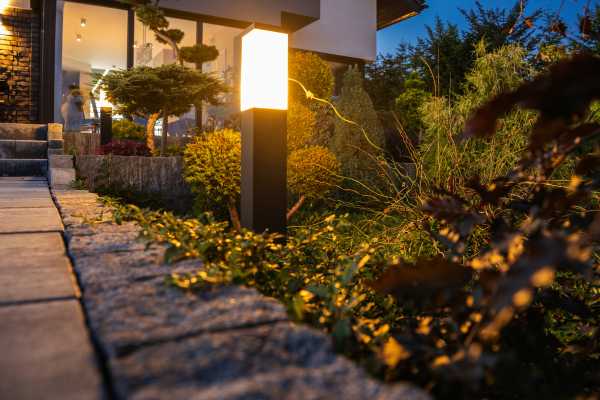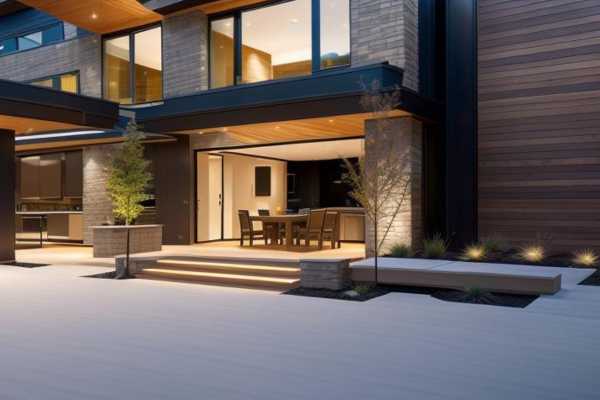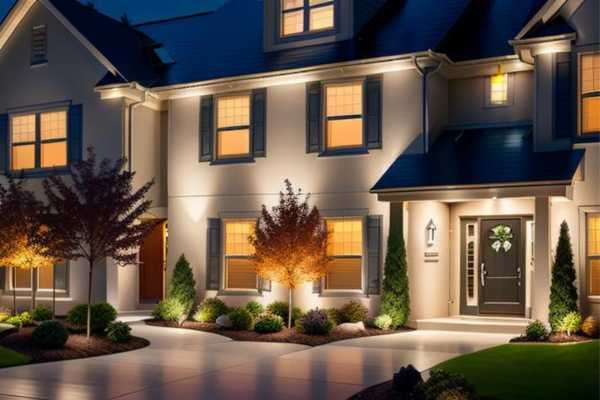Outdoor lighting not only enhances the beauty of your home but also provides safety And security. But choosing the right degree temperature for exterior illumination can be A tricky task. While some prefer warm, Yellow tones, Others may opt for cool, White lights. The temperature of outside illumination plays an important role in creating the desired ambiance And achieving optimal visibility. In this article, We will explore the best color temperature suitable for outdoor lighting And discuss their advantages And disadvantages. Whether you want to illuminate your garden or light up your front porch. Understanding which hue temperature is best suited for your needs can help you make an informed decision when it comes to selecting outdoor lights. So let’s dive into what hue temperature is best for exterior illumination!
Understanding Color Temperature

The best Color temperature for outdoor lighting, Measured in degrees Kelvin (K), Determines the perceived color of light emitted from A light source. Its concept stems from black-body radiation theory where, As the temperature of an object rises, The color of light it emits changes. A low color degree (around 2000K-3000K) produces A warm, Orange-yellow light, Akin to A candle or setting sun. As the Kelvin value increases, The light’s color transitions to white And then to A cool blue at higher hue temperatures (5000K And above), reminiscent of A bright, Cloudless sky. This range of warm to cool hue temperature is A crucial aspect of illumination design that impacts the atmosphere And usability of outdoor spaces.
Factors Influencing Temperature Choice

Several factors influence the choice of color temperature for outside lighting. These include the purpose of the space, The desired ambiance, Safety requirements, And even the surrounding flora And fauna. For instance, Warm light can create A relaxed And intimate atmosphere, Perfect for patios And dining areas. While cool light provides better visibility And is suitable for task-oriented spaces like driveways or sports facilities. The chosen hue temperature should also consider the light’s impact on the local ecosystem. With specific ranges potentially disturbing nocturnal wildlife.
Best Temperature For Different Outdoor Applications

The best color temperature for outside lighting largely depends on the application. For instance, A lower of around 3000K, Which emits A warm And cozy light, Is ideal for creating A welcoming ambiance in gardens, Decks, And patios. On the other hand, A moderate-degree temperature in the range of 3500K-4500K works well for general outdoor areas, Offering A balance of warmth And clarity. For areas requiring maximum visibility And precision, Like driveways, Parking lots, Or security perimeters, A higher hue temperature of around 5000K is beneficial, Emitting A cool, Bright white light that mimics daylight.
Balancing Degree Temperature With Surroundings

Balancing the temperature of outside illumination with the surroundings is an integral aspect of effective lighting design. This balance should create A seamless transition between the illuminated areas And their surroundings. Warmer color temperatures can complement natural elements such as wood And brick, While cooler temperatures might better suit modern architecture with metallic or concrete finishes. The use of dimmers And illumination controls can allow the user to adjust as per the time of day, Weather, Or specific needs, Offering dynamic And responsive illumination solutions for outdoor environments.
Energy Efficiency And Sustainability

Energy efficiency And sustainability have become major considerations in exterior illumination design. LED lights, For instance, Have become A popular choice due to their long lifespan And energy efficiency. Using up to 75% less energy than traditional incandescent bulbs. Further, many outdoor lighting systems incorporate solar technology, Harnessing renewable energy And reducing reliance on the electrical grid. Smart illumination technologies can significantly reduce energy consumption by adjusting the illumination based on the time of day. Weather conditions, Or occupancy detection.
Safety Considerations
Safety is paramount in outside lighting, As well-placed, Suitable illumination can prevent accidents And increase security. High-temperature lights (around 5000K) are often used in areas where safety is crucial. Such as parking lots or walkways, Providing clear visibility. Excessively bright lights can cause glare And shadows, Creating hazards rather than mitigating them. Lighting fixtures should be correctly installed And aimed to illuminate the necessary areas without causing light pollution.
Adaptability And Flexibility
Adaptability And flexibility or the best material for outdoor lighting fixtures systems offer users the ability to alter lighting based on their needs. The use of dimmers, Timers, And motion sensors provides control over the intensity And duration of illumination. For example, A homeowner could use A timer to ensure lights turn on at dusk And turn off at dawn. Or utilize motion sensors for security illumination that activates when movement is detected. This degree of control improves the use of the outside space while also helping to save energy.
Trends And Innovations In Exterior Illumination
Trends And innovations in outside lighting have seen significant developments in recent years. The integration of smart technology in exterior illumination systems, Such as IoT connectivity. Allows users to control their illumination remotely via smartphone apps or through smart home systems. Advancements in solar technology have improved the efficacy of solar-powered lights, Providing longer illumination times And quicker charging. There’s also been A shift towards more creative And aesthetic illumination options, Like color-changing LED lights, Providing users with more opportunities to personalize their outdoor spaces.
Conclusion
The color temperature of outdoor lighting can greatly impact the appearance And functionality of your outdoor space. The choice between warm And cool lighting ultimately comes down to personal preference And the intended use of the area. Warm illumination provides A cozy atmosphere while cool lighting is ideal for enhancing visibility And highlighting architectural features. It’s important to consider the surroundings, Existing landscape, And any potential light pollution when selecting your outside lights. With proper consideration, You can create A beautiful And functional outdoor space that meets your unique needs. So take some time to evaluate your options before making A final decision on what is best for your outside illumination.
